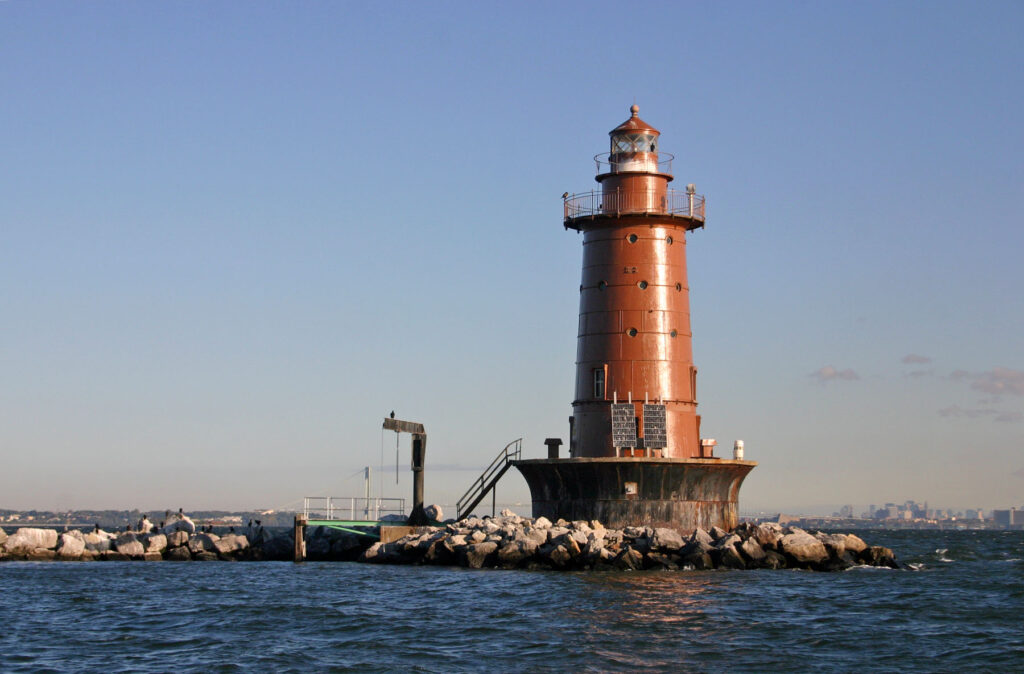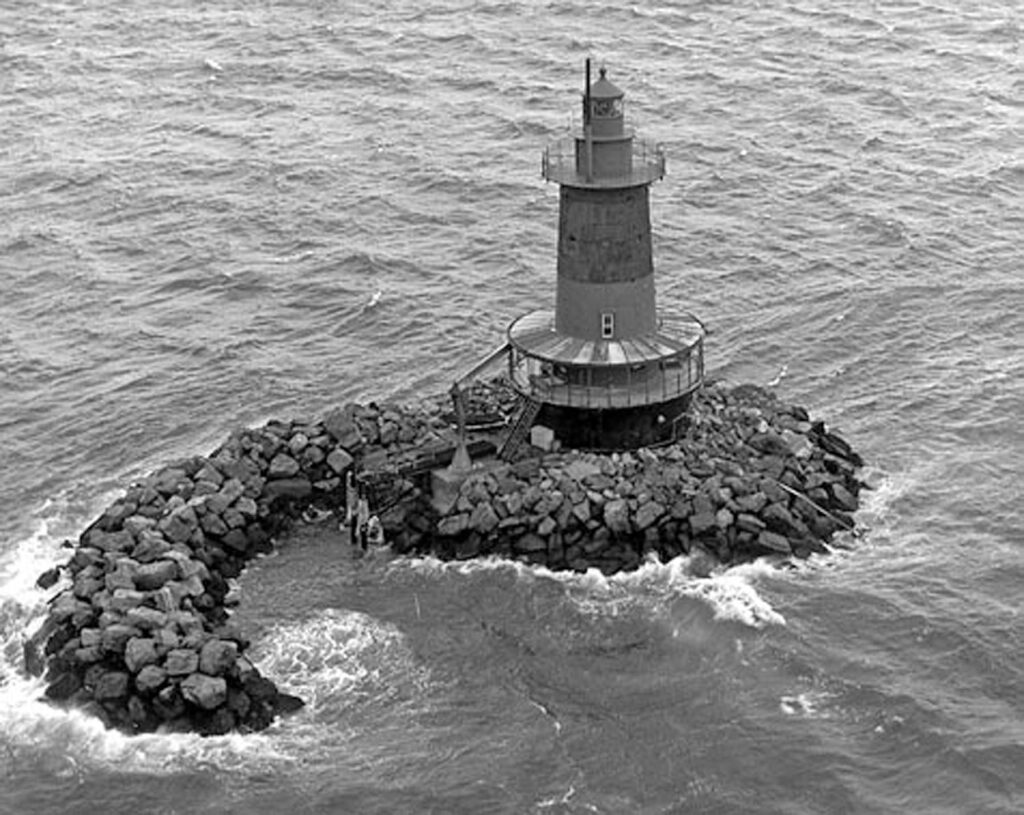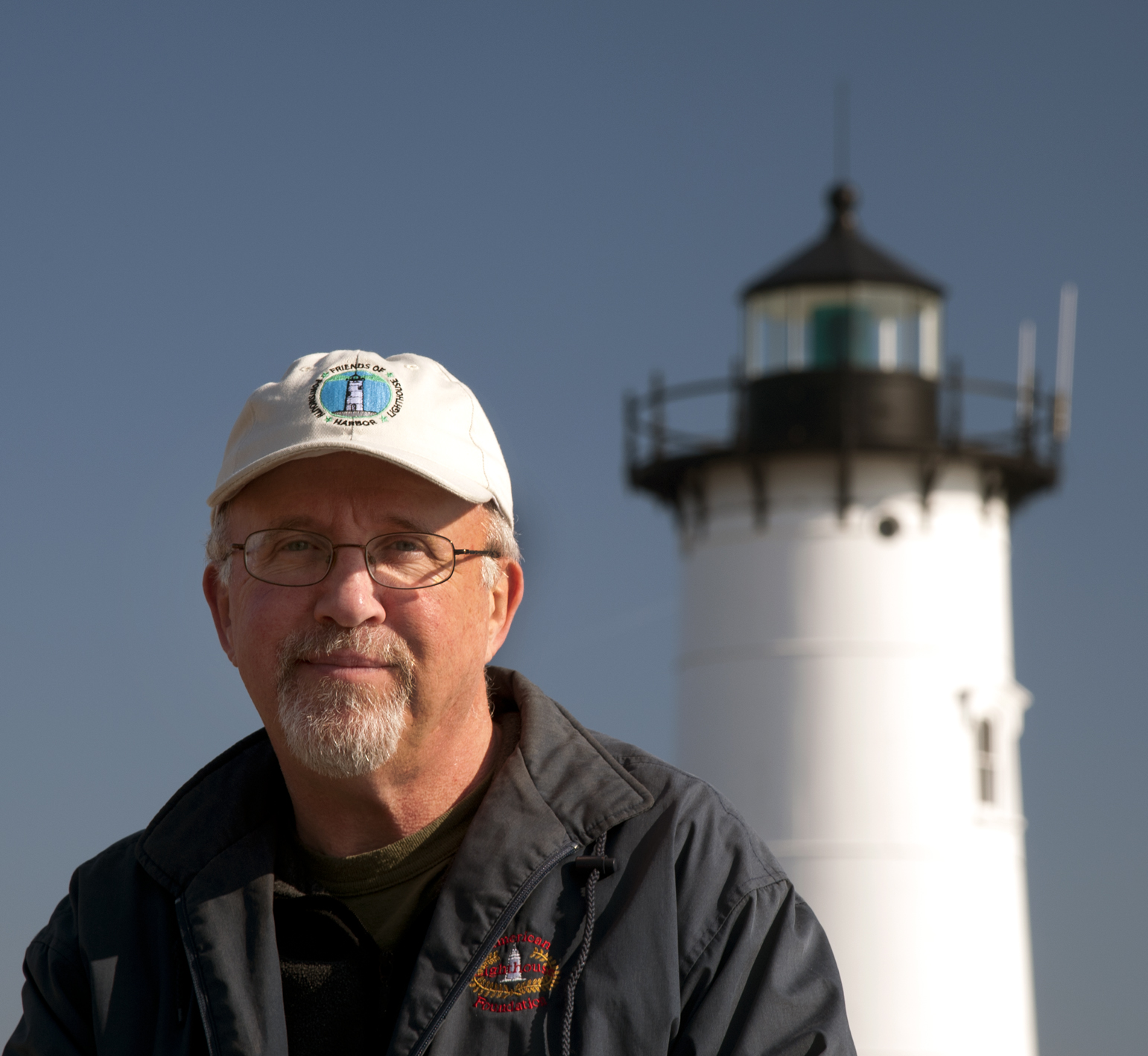
Captain Joshua K. Card reporting from Portsmouth Harbor Light in New Hampshire. Unseasonably warm here lately for early fall, but I’m not complaining. My station, by and large, is rather peaceful and quiet, being in sheltered waters a mile inside the mouth of the Piscataqua River. I spent my first few years in the Lighthouse Service at the much more exposed station at Boon Island in southern Maine, so I know what it’s like to live at a lighthouse that takes the full fury of the ocean. One thing I’ve never experienced is life at a light station in a shipping channel as busy as the ones in New York Harbor.
As the work of improving the main ship channels into New York Harbor progressed in the late nineteenth century, the Lighthouse Board in 1896 proposed a lighthouse on West Bank, off Staten Island in the lower bay. Congress complied with the funding and the lighthouse went into service on January 1, 1901, with a fourth-order Fresnel lens showing a fixed white light with a red sector. A fog siren was established in June 1901.

The new lighthouse nearly met a premature demise on December 28, 1904. A large ship, being towed by a tugboat, crashed into the tower, ripping away railings and breaking glass. The towing company paid for the $1,200 in damages. Ed Burge, the principal keeper, was in the lighthouse at the time. In an interview years later, he said, “She tore out one side of the tower, ripped free and drifted on, leaving that gale pouring through my bedroom. Nope, I didn’t do anything heroic. A man can’t be much of a hero without his pants.”
Less than a year later, another collision caused damage to the foundation caisson. After more than a decade of additional deterioration, the foundation was repaired in July 1916, at a cost of almost $11,000. A protective riprap bulkhead was created around the base of the lighthouse.
Many people have romantic notions about the life of a lighthouse keeper, and Ed Burge was quick to dispel such thoughts in a 1924 interview:
“I met a lady once who was all filled up with what she called the romance of the lighthouse. She said she often longed to be a keeper and live alone in a tower on a rock far out in the sea, and have peace and quiet. Peace and quiet! A lighthouse is about the noisiest place in the world. Out there on West Bank, for instance, with a gale blowing. When I was there, the tower rose right out of the water, with no footing at all around it, so the waves crashed against the whole tower; shook it until sometimes the mantles over the burners in the light broke. Sometimes the waves went clear over the gallery, and the spray over the light itself . . . Nice, romantic spot – so quiet that the keeper can scarcely hear the whistles of steamers and tugs in the channel.”
Ed Burge brought a fox terrier to the lighthouse in 1901. Burge recalled Buster in an interview. “You couldn’t get that dog to live ashore,” he said. “Sometimes when I took him with me after supplies, he’d run down to the edge of the water and look out toward the light, and whine. If the light dimmed at night, or the fog signals stopped, he’d bark and tear around.”
Burge claimed that the dog recognized many of the passing boats and loved to sleep outside, keeping an eye on the passing traffic. In 1906, when Burge moved on to Elm Tree Light on Staten Island, the dog was so homesick that Burge gave him to the new keeper at West Bank.
West Bank Lighthouse is now privately owned. The Coast Guard continues to care for the light and fog signal.
(Information from Lighthouses of New York Harbor and the Hudson River by Jeremy D’Entremont. Cider Mill Press, 2008.)

Jeremy D’Entremont is the author of more than 20 books and hundreds of articles on lighthouses and maritime history. He is the president and historian for the American Lighthouse Foundation and founder of Friends of Portsmouth Harbor Lighthouses, and he has lectured and narrated cruises throughout the Northeast and in other regions. He is also the producer and host of the U.S. Lighthouse Society podcast, “Light Hearted.” He can be emailed at Jeremy@uslhs.org

